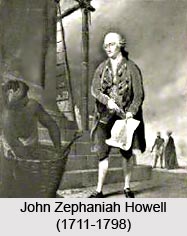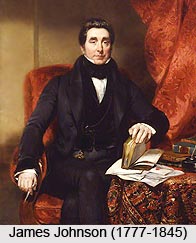 Before the advent of the British in India the medical system of India was not all that structured. Traditional and ancient system of medicine from forests and `rishis` were in vogue in India for treating illness. It is after the British`s arrival in native soil, substantial changes took place in medicine. Britishers was responsible to bring home the western system of medical treatments, with advancements for every kind of patients. Developments in medicine and medicinal fields thus gained pretty momentum since the 17th century.
Before the advent of the British in India the medical system of India was not all that structured. Traditional and ancient system of medicine from forests and `rishis` were in vogue in India for treating illness. It is after the British`s arrival in native soil, substantial changes took place in medicine. Britishers was responsible to bring home the western system of medical treatments, with advancements for every kind of patients. Developments in medicine and medicinal fields thus gained pretty momentum since the 17th century.
In 1761, the Army Medical Department was established in India, providing services to British troops associated with the British East India Company`s army.
In January 1764, the Bengal Medical Service was founded. The organisation consisted of four head surgeons, eight surgeons, and twenty-eight surgeon`s mates. Soon thereafter this organisation was replicated in the Madras and Bombay Presidencies. During the 1760s, the Military Subordinate Medical Service was organised in Bengal to employ Indians and European soldiers as compounders, dressers and apothecaries.
In 1767, John Zephaniah Howell (1711-1798) reported to the College of Physicians in London on his observations regarding the practice and level of effectiveness of variolation, or Indian inoculation for smallpox. Jenner`s discovery of the cowpox inoculation method for smallpox in 1798 brought to an end European use of variolation by 1802. Developments in medicine during the early advent of the British in India were kind of a boon to native residents, who still now did never hear about such advancements in the medical world.
In 1773, the British East India Company appointed a Board to screen and select candidates for appointment as assistant surgeons in the respective presidency medical services.
On 29th May 1786, a Hospital Board was created for each presidency which in May was converted to a Medical Board subordinate to the presidency`s Commander-in-Chief.
Developments in medicine received additional impetus when on 28th October 1788 Lord Charles Cornwallis (1738-1805) began the practice of granting military commissions to doctors, provided the appointee had twenty-one months of medical training in India. He also stipulated that medical officers could be lent to civilian duty with the provision of recall to military duty when necessary.
In 1794, the Madras Lunatic Asylum opened for the purpose of restraining the violent acts of the mentally ill. Patients were carefully placed in separate apartments according to class, gender and race. Similar institutions were established in Calcutta and Bombay during this period. By 1818 official Company policy called for the return of European lunatics to England if their incapacity lasted for more than one year. Medicinal developments were looked into watchfully, with every care and pain taken into account when protection and cure was the only concern.
In 1802, Jennerlan vaccination for smallpox was introduced in India. Dr. William Russell, Superintendent of Vaccination, carried out the inoculation of many European children located at Company stations throughout Bengal.
In 1810, John Fleming (1770-1829) of the Company`s Medical Service prepared from his study of plants a work on Indian drugs entitled, A Catalogue of Indian Medicinal Plants and Drugs with their Names in the Hindustani and Sanskrit Languages.
In 1813, James Johnson (1777-1845) published The Influence of Tropical Climates on European Constitutions, which proved to be the most influential medical work in India for the next forty years. It was highly critical of excessive British consumption of beef, pork and alcohol. Instead, he recommended the eating of more vegetable food. Developments in medicine were slowly coming to a full circle, owing to the good-will of the British men, awaiting more improvements in the turn of the century.
In 1853, John Snow (1813-1858) advanced the theory of continuous molecular action in association with his belief that cholera was transmitted only in drinking water contaminated by human excrement. These ideas formed the basis for much of the medical thinking on the source of cholera over the next thirty years.
 In 1856, Lord Dalhousie (1812-1860), Governor-General of India opened a Government Lunatic Asylum in Calcutta under the supervision of an East India Company medical officer.
In 1856, Lord Dalhousie (1812-1860), Governor-General of India opened a Government Lunatic Asylum in Calcutta under the supervision of an East India Company medical officer.
In January 1858, the Indian Medical Service established in each presidency (Bengal, Bombay and Madras) the Office of Director-General. This measure occurred in consequence of the Crown taking over medical services from the British East India Company. Developments in medicine had a slight push up towards a different goal when the British Crown with Her Highness decided to rule India directly under Her administration, from England.
In 1859, the Crown appointed the Royal commission on the Sanitary State of the Army in India. Although the Commission did not visit the subcontinent, it did interview men with Indian experience. Its 1863 report identified the high Army death rate as due to: inadequate supply of clean water, poor sewage, bad drainage and crowded and poorly ventilated troop barracks. The Commission also commended the establishment of a sanitary commission in each presidency. From this work emerged the concept of the Government of India responsibility for India`s public health.
In 1860, Sir Clements Robert Markham (1830-1916) explored parts of Peru in search of the cinchona tree for shipment and establishment in India. Cinchona, as the source of quinine, was used to fight malaria. This and later attempts to grow cinchona in India however became problematic with the success of its cultivation by the Dutch in Java.
In 1861, a cholera epidemic occurred in Northern India of such severity that in consequence, four European international sanitary conferences were convened to negotiate quarantine measures as a means for preventing the spread of cholera. The 1861 conference at Constantinople particularly focused on health measures used at the port of Bombay as the originating point of many Muslim pilgrimages to Arabia which often proved to be the source of cholera outbreaks.
Developments in medicine under British regime were to witness even more augmented measures, when in 1864 the Sanitary Department of the Indian Medical Service was created. From the 1890s its officers generally held to the value of bacteriological medicine and possessed a sense of reform in matters of public health. The level of intervention by the sanitation officer into Indian life was always tempered by the fear of creating the conditions for a "second mutiny".
In 1867, the Delhi Female Medical Mission, associated with the Society for the Propagation of the Gospel, began operations in Delhi. In 1868, the Contagious Diseases Act reinstated the provision of "lock hospitals" for the treatment of prostitutes suffering from venereal diseases located at or near army cantonments throughout India. They had earlier operated from 1805 until their abolishment in 1833.
In 1871, Government of India began the manufacture of morphine from opium and quinine from cinchona bark in replacement of costly irregular imports. This was a sharp move towards emergency developments in medicine, because these prescribed medicines were to take a significant role in medical world much later.
In 1872, Sir Joseph Fayrer (1824-1907) published a significant work on Indian snake poison, Thanatophidia of India (1872). In 1873, Fayrer and Sir Lauder Brunton demonstrated that the venom of the cobra produced a fatal respiratory paralysis.






































